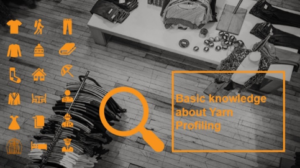 Training Serie:
Training Serie:
Smart Supply Chain for Textiles – From error prevention to intelligent approaches for the textile trade
Smart Supply Chain for Textiles is a training course that systematically imparts basic textile knowledge, for more efficient communication and fewer misunderstandings at the typical interfaces of the textile trade. The most important criteria for defining quality are explained, using practical examples. Defects in textile fabrics are presented and analyzed, with solutions for their prevention. The causes of defects are classified according to material selection, yarn properties and fabric production. Defects caused by dyeing, finishing, packaging and transport are also covered.
The course is designed for anyone working at the interfaces of textile trade. From yarn purchasing and sales to fabric manufacturers (knitters, weavers) and trading companies and brands. Of course, the content is also of interest to quality representatives of spinning mills.
All Courses in the Series
Part 1 deals with the definition of quality and defects in the textile fabric due to the selection of raw materials. The content concentrates on the determination of fiber quality in bundle form.
Part 2 investigates fabric defects as a result of fiber properties measured in the single fiber form. The difference between carded and combed yarns is discussed.
Part 3 starts with the focus on fabric defects caused by yarn properties. The focus in this part is on the uniformity and hairiness of the yarn.
Part 4 focuses on fabric faults due to yarn properties, with the emphasis on yarn twist and yarn strength.
Part 5 focuses on yarn classification and cleaning. This means defects in the fabric caused by the yarn properties.
Part 6 offers a detailed comparison between the different yarn types of the short staple fiber spinning process. The behavior and effects on the downstream process and the final fabric properties. Defines the yarn packages and explains problems in the downstream process due to package faults.
Part 7 contains basic knowledge about weaving and knitting and describes fabric defects that occurred during fabric manufacture.
Part 8 teaches basic knowledge in the areas of dyeing, printing, finishing and packaging. Explains the reasons for fabric and clothing defects caused by these process steps. In addition, errors caused by incorrect storage and transport of finished products are described.
Part 9 addresses sourcing strategies. Explains how to use Uster Statistics and how to interpret it correctly.
Part 10 engages with prediction models “yarn to fabric”, for example the Uster Yarn Grades. The question of use is clarified. Yarn profiling strategies for specific textile applications.









